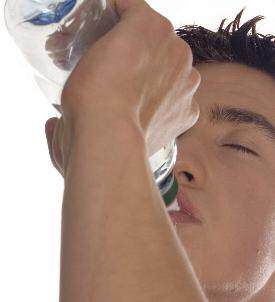Basic HTML Version




to grind rather than bake
ketamine crystal ensures
that it is suitable for
sniffing without the
product being degraded
in quality, which offers a
practical way of driving
down the amount of
ketamine people are
putting through their
systems. Hydration has
been shown to be
essential in ensuring that
ketamine passes through
the body, and particularly
the bladder, without
hardening the bladder wall and damaging the kidneys and liver.
Coact has also developed the K-check tool, which is a triage, health
assessment tool for ketamine users that supports GP and drug workers to
objectively assess the risks and harms being faced by problem ketamine users,
as a basis for delivering appropriate advice and guidance. Importantly it also
helps workers identify and refer on those showing signs of ketamine bladder
syndrome. However, it is important that drug services work with urology services
to help them manage people who may struggle to stop ketamine use, despite the
severe impact on their bladder and kidneys. Frightened and physically damaged
young people need help to come to terms with the impact of ketamine bladder
syndrome, the challenges of often painful and invasive treatments, and the need
to cease ketamine use once the chronic condition has set in.
On a positive note, ketamine dependency is relatively easy to treat and
withdrawal symptoms are not too severe; people mostly need time to sleep, help
with breaking compulsive using cycles, and encouragement to hydrate and eat.
However, ketamine knocks out the conscious mind and with it a person’s capacity
to problem-solve, and this can reduce people’s ability to find their way out of
dependent use.
Promoting self-control can be a useful step – an interim one for some and an
alternative path for others. The challenge is to draw someone into a space where
they are taking breaks from ketamine, thus creating the scope for reflective
engagement with the conscious mind fully functioning. For those with lengthy
histories of regular use, it may take up to three months after cessation for their
memory to fully kick back in and this may need to be explained and managed
within a treatment or rehabilitation context.
Finally, it is important to understand that many people experiencing problems
with ketamine will have particular world views around spirituality, given their
journeying with this drug. The blunt application of recovery models has been
shown to be off-putting to a group unfamiliar with this discourse. Drug services
need to reflect on how to meet this different type of user, acknowledging that
practices like yoga, meditation and general mindfulness training may be both
effective and culturally attractive to this group of spiritual journeyers who lost
their way.
DDN
Mat Southwell is partner in Coact and an organiser with Respect. Lana Durjava
is a postgraduate student of psychology at the University of Westminster. For more
detailed harm reduction advice on ketamine from Coact see the online version of
this article at www.drinkanddrugsnews.com
November 2013 |
drinkanddrugsnews
| 9
www.drinkanddrugsnews.com
Cover story |
Ketamine
‘The key harm reduction
messages for active ketamine
users revolve around dose
management and hydration.
Understanding how to dose,
avoiding dose stacking and
learning to take breaks
between using sessions...’
REAL

